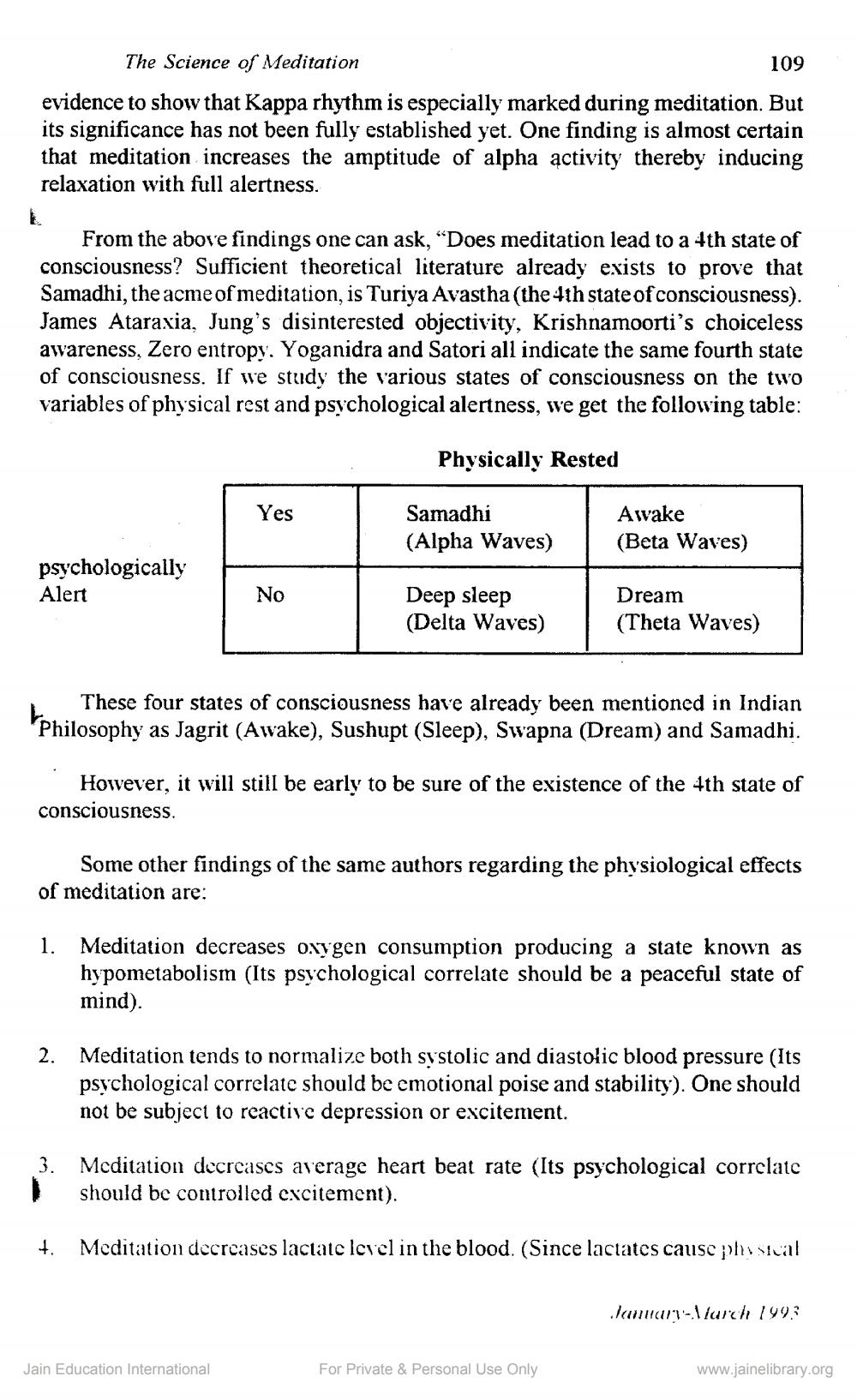________________
The Science of Meditation
109
evidence to show that Kappa rhythm is especially marked during meditation. But its significance has not been fully established yet. One finding is almost certain that meditation increases the amptitude of alpha activity thereby inducing relaxation with full alertness.
From the above findings one can ask, "Does meditation lead to a 4th state of consciousness? Sufficient theoretical literature already exists to prove that Samadhi, the acme of meditation, is Turiya Avastha (the 4th state of consciousness). James Ataraxia, Jung's disinterested objectivity, Krishnamoorti's choiceless awareness, Zero entropy. Yoganidra and Satori all indicate the same fourth state of consciousness. If we study the various states of consciousness on the two variables of physical rest and psychological alertness, we get the following table:
Physically Rested
psychologically
Alert
Yes
2.
No
3.
Samadhi
(Alpha Waves)
These four states of consciousness have already been mentioned in Indian Philosophy as Jagrit (Awake), Sushupt (Sleep), Swapna (Dream) and Samadhi.
+.
Deep sleep (Delta Waves)
However, it will still be early to be sure of the existence of the 4th state of consciousness.
Some other findings of the same authors regarding the physiological effects of meditation are:
Awake
(Beta Waves)
1. Meditation decreases oxygen consumption producing a state known as hypometabolism (Its psychological correlate should be a peaceful state of mind).
Jain Education International
Dream
(Theta Waves)
Meditation tends to normalize both systolic and diastolic blood pressure (Its psychological correlate should be emotional poise and stability). One should not be subject to reactive depression or excitement.
Meditation decreases average heart beat rate (Its psychological correlate should be controlled excitement).
Meditation decreases lactate level in the blood. (Since lactates cause physical
For Private & Personal Use Only
January-March 1993
www.jainelibrary.org




